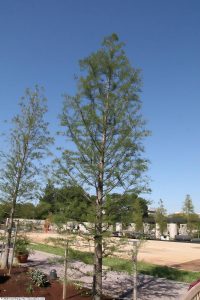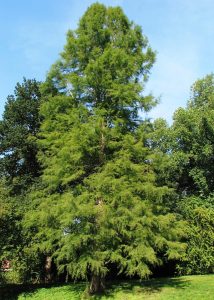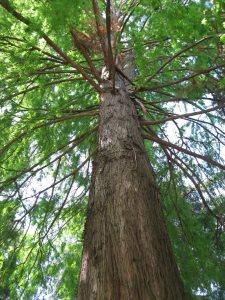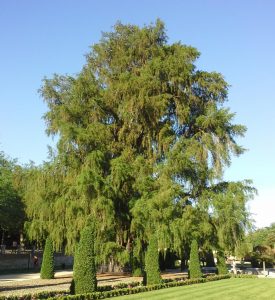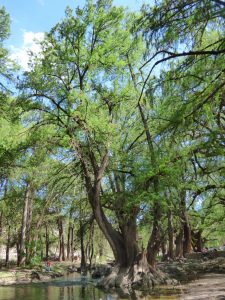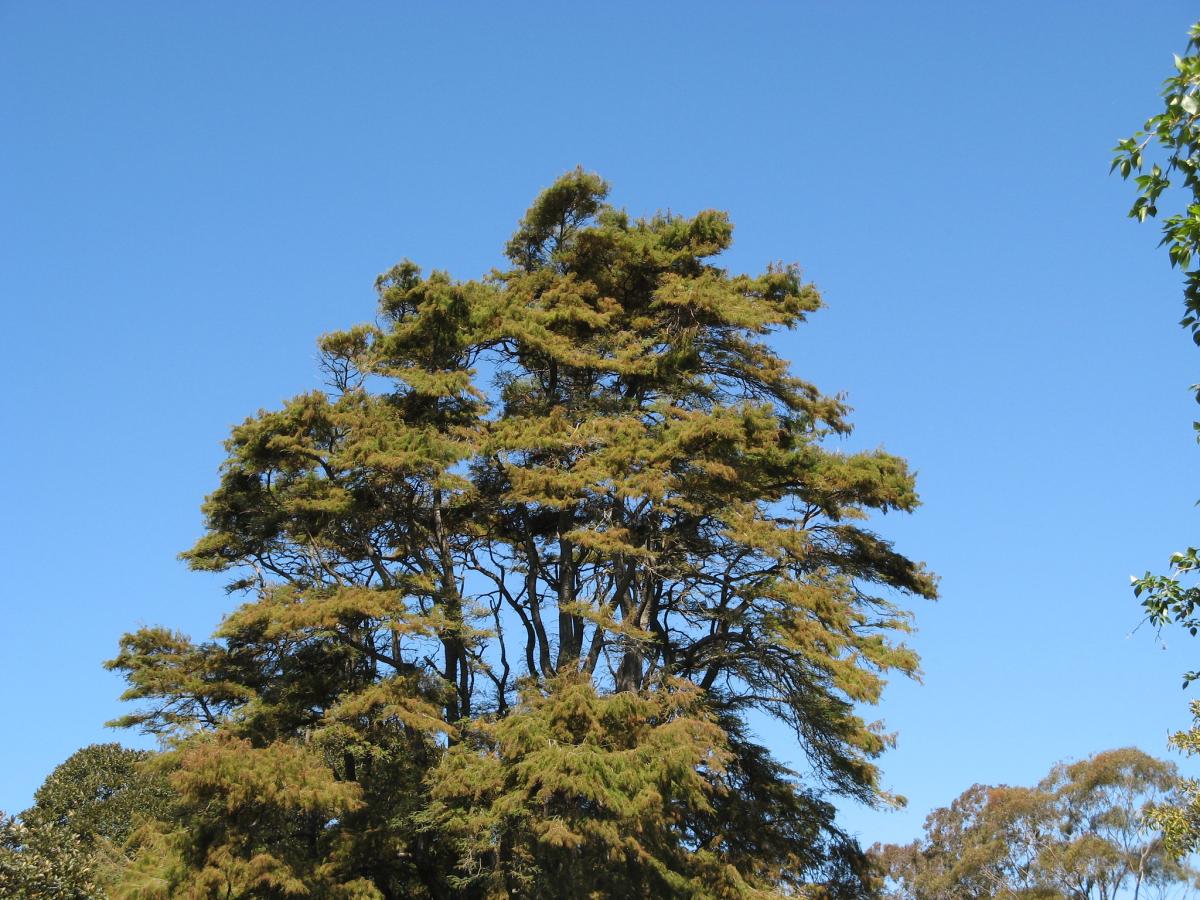
Image - Flickr / cskk
Taxodiums are a genus of trees that are usually found in swampy areas, which is why they are one of the most recommended for planting in lands with a tendency to flood, or in gardens that are in regions where it rains very frequently. However, they also do quite well in areas that are not so humid, but it is still important that they do not lack water at any time.
They reach impressive heights, up to 45 meters. Thanks to this, they are one of those trees that can stand out the most in a field, and also, the ones that can give more shade. What's more, it is interesting to know that there are several types of Taxodium. Do we know them?
Origin and characteristics of the Taxodium

The taxodium They are conifers that belong to the Cupressaceae family, and that are native to southern North America. They basically live in swampy regions, where they can grow logs of more than 40 meters high and up to 3 meters in diameter. Also, if they are in flooded places they produce pneumatophores, which are aerial roots that help them breathe.
The leaves are needle-shaped, green, and between 0,5 and 2 centimeters long.. They behave as deciduous if both autumn and winter are cold and significant frosts are registered, but when the climate is a little milder they are semi-perennial; that is, they lose only a part of the leaves that populate their crown. It is also important to say that during the fall these can turn reddish before detaching from the branch.
As for the flowers, they have not. It is believed that the Taxodium began their evolution during the Upper Cretaceous, between 100 and 66 million years ago, and at that time in temperate regions conifers continued to thrive, since it was where there was less diversity of fauna (and therefore, also fewer candidates for pollinators).
But what they do do is produce male or female globose cones measuring about 3 centimeters in diameter. These cones take a long time to mature once pollination has occurred: between 7 and 9 months. Once they do, their scales split open, releasing the seeds.
As a curiosity, tell you that Taxodium fossils have been found in Europe: one of them is from a fossilized leaf of the species Taxodium dubium, now extinct, which lived in what is now Germany until approximately 2 million years ago.
Types of Taxodium
At present, three types of Taxodium are accepted, although there are botanists who consider that there are only two, and others only one. But given that they live in different places, and have different sizes, let's see how these three species:
Taxodium ascendens
- Image - Wikimedia / David J. Stang
El Taxodium ascendens It is a deciduous or semi-evergreen conifer known as a swamp cypress. It lives on the coasts of North Carolina and reaches southeastern Louisiana, specifically in swamps and rivers. It grows between 20 and 35 meters in height. The leaves are acicular, thin and between 3 and 10 millimeters long. Its cones are 2,5 centimeters in diameter.
It is usually considered a variety of Taxodium distichum, becoming called Taxodium distichum var imbricatum, but both the leaves and the cones are smaller than this. Also, T. ascendens prefers soils that do not have large concentrations of silt *.
* Note: silt is a type of sediment that is carried by rivers and wind, and is usually very rich in organic matter. It is also known as mud or mud.
Taxodium distichum
- Image - Wikimedia / Darkone
El Taxodium distichum It is a deciduous species called the swamp cypress or bald cypress, and it lives in the southeastern United States. To be more specific, in wetlands, although it adapts to drier terrain. Reaches a height of 40 meters, and develops a pyramidal or conical cup. Its branches tend to grow horizontally, and its leaves are 15-20 millimeters long. It produces cones of up to 3,5 centimeters, the male ones being smaller.
It was introduced in Europe around 1640, but the truth is that this species had already lived on the Old Continent before about 8 million years ago. Proof of this are the fossilized remains that were found in Hungary in July 2007 (if you want to know more about it, click here).
taxodium mucronatum
- Image - Wikimedia / Luisalvaz
El taxodium mucronatum (now Taxodium huegelii) is an evergreen or semi-evergreen variety known as ahuehuete. It is native to Mexico, although it can be found in both southern Texas and northwestern Guatemala in isolation. Reaches a height of up to 40 meters, and its leaves are 1-2 centimeters long. As for the cones, these have an oval or spherical shape, and measure between 1,5 to 2,5 centimeters.
Unlike the previous two, this is the only one that only grows wild in swampy terrain. It can adapt to those drier, but it will have a better development if it is in an area where either there is stagnant fresh water, or where the rains are very abundant.
Which of them do you like the most?

